Pivot Cycles’ brand-new Switchblade looks to blur the boundaries between trail and enduro with a bump-busting 142mm of rear-wheel travel, a 160mm travel fork and relaxed geometry that’s compatible with both 29in and 27.5in+ wheels.
I went out to Gran Canaria to ride the new bike on some of the rockiest and loosest tracks I’ve experienced in quite some time.
You can read about the full range of new Switchblade bikes and the technology behind them in our news story.
2020 Pivot Switchblade frame details
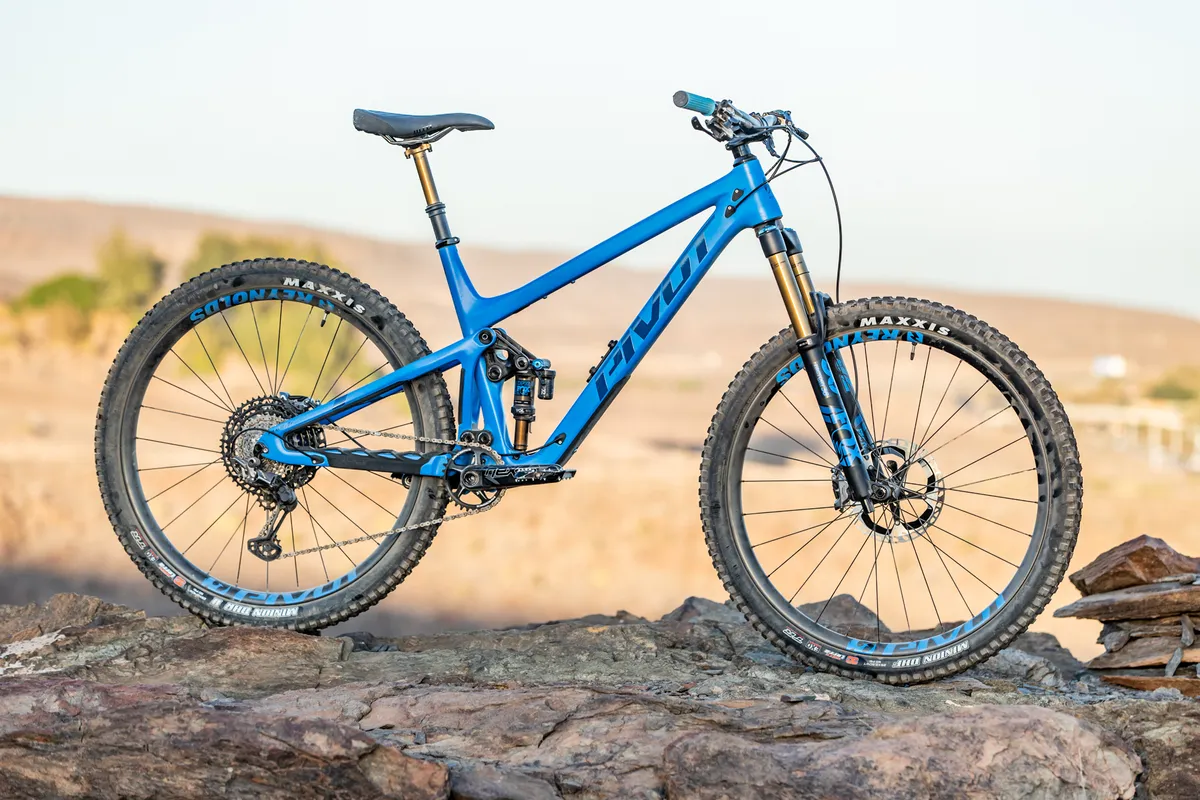
Both the swingarm and front triangle are built from hollow-core carbon fibre, but only the front triangle has a size-specific carbon lay-up that’s claimed to help maintain ride feel across sizes.
The rear end has been made to be stiff by its symmetrical design, a wide DW link pivot and the construction of the upright bar between chain and seat stays.
The swing arm’s geometry, along with its stiffness, remains the same across the bike’s sizes. The rear end’s compatible with up to 2.8in tyres for 650b plus wheels and 2.6in tyres on 29in wheels.
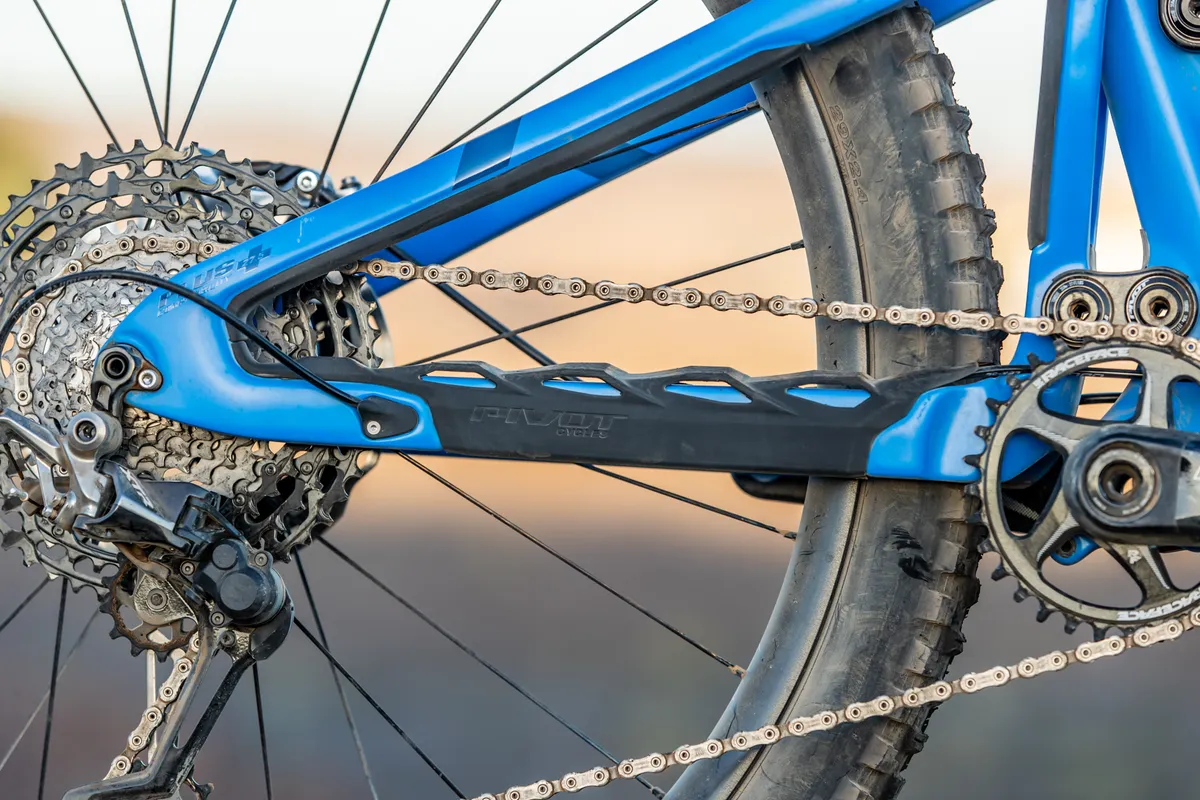
The swingarm also has in-built, ribbed chain slap protection to help reduce noise and damage to the bike’s tubes.
Water bottle and Fox Live Valve fitments are present across sizes and there is an additional set of bottle mounts on the underside of the top tube that are perfect for mounting tools or pumps.
There are full-length internally-routed cables. Pivot’s Cable Port System clamps the cables in place where they enter and exit the frame. There are ISCG05 chain guide tabs and compatibility for up to a 36-tooth chainring.
2020 Pivot Switchblade geometry details
In the low setting, the large bike has a 66-degree head angle, 75.5-degree seat tube angle, 431mm chainstays, 1,216mm wheelbase and a 470mm reach.
The geometry is adjustable with a flip-chip and when swapped between high and low settings changes the head and seat angles by 0.5 degrees and lowers the bottom bracket by 6mm.
The bike’s compatible with 29in and 27.5in wheels and mullet setups.
Geometry figures for size large bike:
- Head angle: 66 degrees (low) / 66.5 degrees (high)
- Seat angle: 75.5 degrees (low) / 76 degrees (high)
- Chainstay: 431mm (low) / 430mm (high)
- Seat tube: 431.80mm (low) / 432mm (high)
- Top tube: 638mm (low) / 636mm (high)
- Head tube: 108mm (low) / 108mm (high)
- Bottom bracket drop: 28mm (low) / 19mm (high)
- Bottom bracket height: 346mm (low) / 352mm (high)
- Wheelbase: 1,216mm (low) / 1,215mm (high)
- Stack: 630mm (low) / 627mm (high)
- Reach: 470cm (low) / 475mm (high)
- Standover: 696mm (low) / 701mm (high)
2020 Pivot Switchblade suspension details
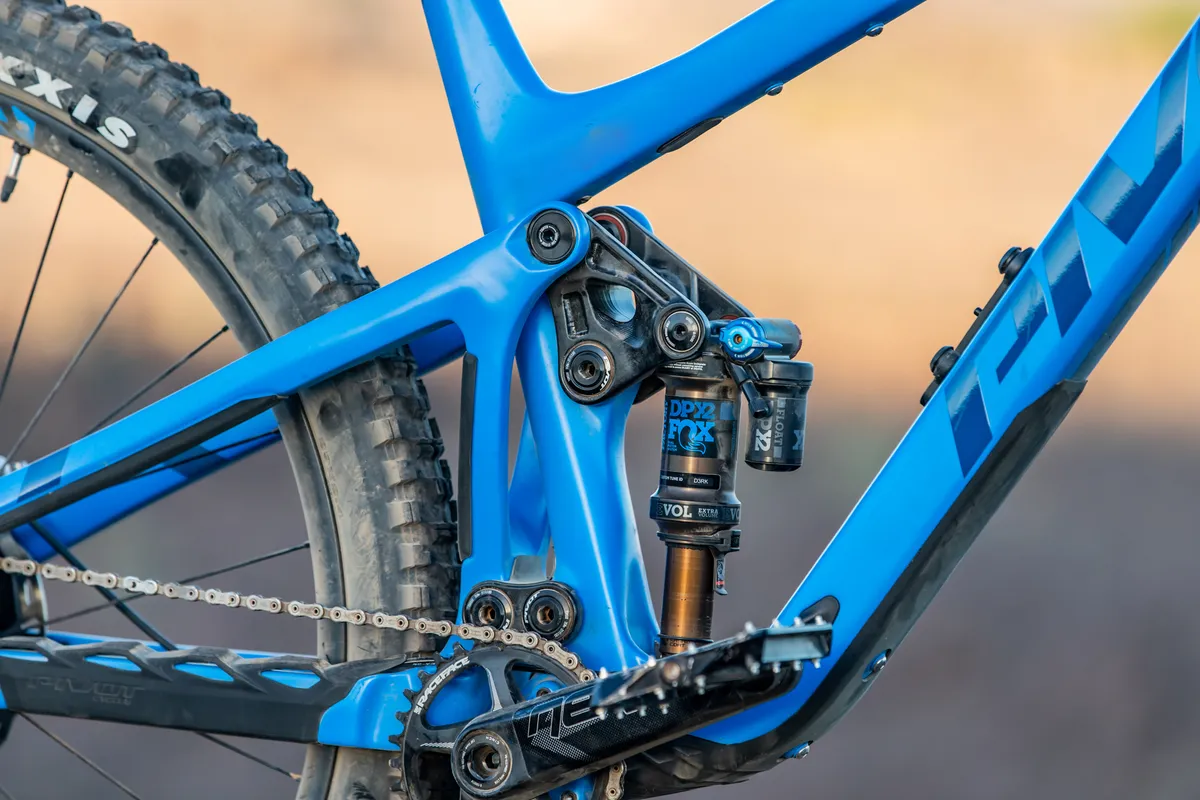
The bike’s 142mm of travel is controlled by Dave Weagle’s patented DW-Link suspension design that’s renowned for its specific claimed traits such as stroke-sensitive anti-squat, no pedal bob, neutral braking and a tuned axle path.
Fitted with a DPX2 rear shock that’s been redesigned for Pivot by Fox, the Switchblade is touted to have supple suspension over high-speed hits while retaining plenty of support deeper into the travel.
The kinematic is compatible with coil shocks which means there’s a level of in-built progressivity. The test bike I rode had the largest 1.02in cubed spacer fitted to the Fox DPX2 shock.
2020 Pivot Switchblade Team XTR specifications

Fitted out with cream of the crop kit, the Team XTR model I rode left no expense spared.
Up front was a Fox 36 Factory Float GRIP2 with Kashima coated stanchions that had high- and low-speed compression and rebound damping adjustment, mated to the Fox DPX2 Float with low-speed compression and rebound adjustment and a three-position lockout lever.
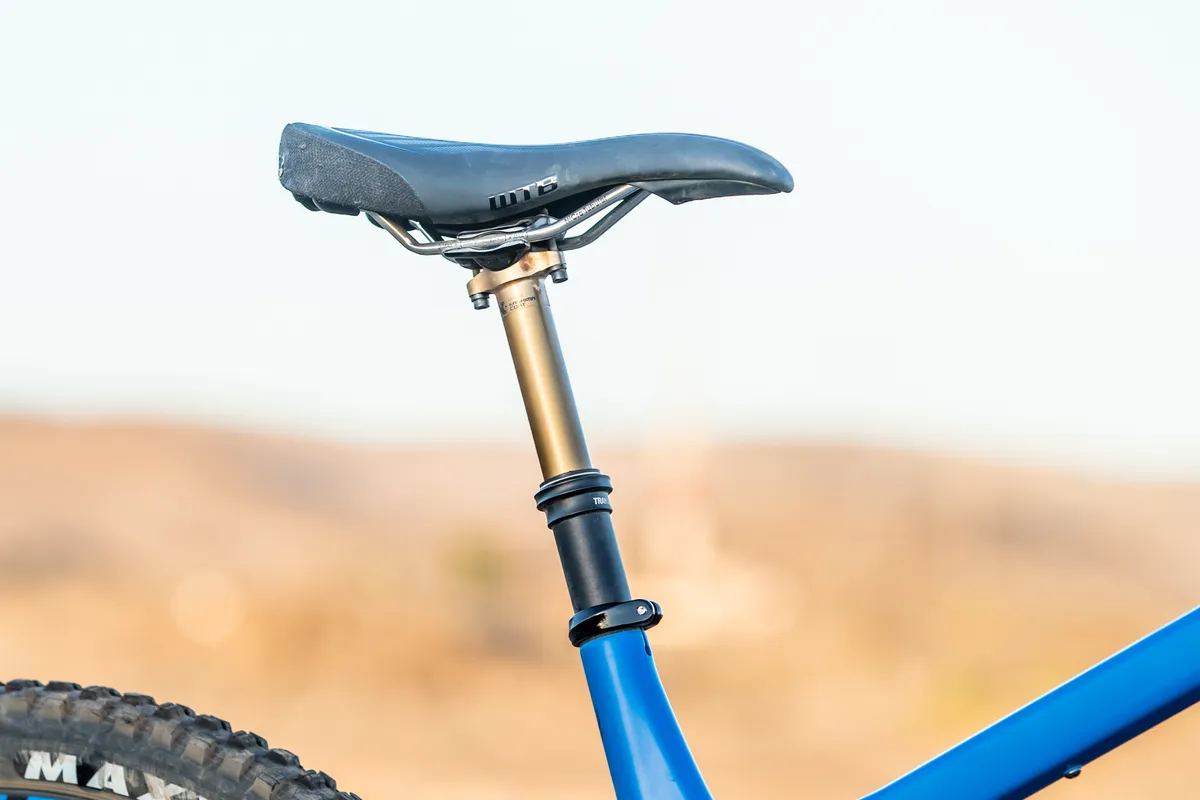
The bike had Shimano 4-piston XTR brakes with a 200mm front rotor and 180mm rear rotor and the 12-speed Shimano XTR drivetrain including mech, shifter, cassette and chain, but Race Face Next R cranks with a 32-tooth chainring replaced the Shimano models.
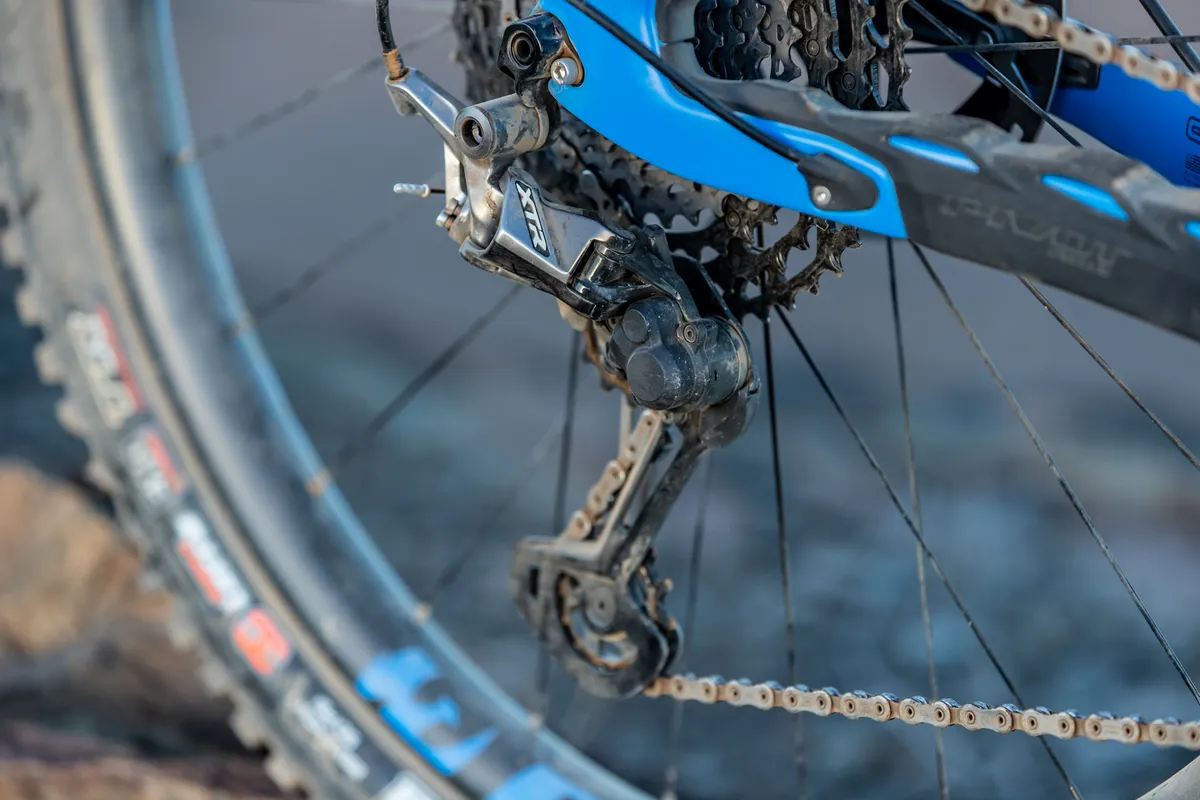
I rode the carbon fibre Reynolds Blacklabel rims laced to Industry Nine hubs, with both front and back wheels wrapped in Maxxis rubber – a Minion DHF up front and a DHRII on the rear – with EXO Plus protection.
It was specced with a 175mm Fox Transfer Factory dropper with Kashima stanchion and a WTB Vigo saddle. It was finished off with Pivot’s Phoenix bars, stem and grips.
2020 Pivot Switchblade Team XTR ride impressions

As ever with press camps, getting concrete ride impressions is tricky. Riding unfamiliar terrain, often unsighted and not being able to ride repeat runs on the same track means that it’s hard to compare this bike to ones I’ve ridden on more trodden routes, although getting a rough impression is possible.
The tracks I rode in Gran Canaria were particularly rocky; loose rocks, immovable cobble-like paving, harsh rocky steps and fine anti-grip marbles all featured. The runs were also a mixed bag.
Some were ancient hiking trails with tight 180-degree switchbacks and long, flat-out straights. Others slower, picky and technical requiring pinpoint accuracy, and there were some MTB-specific, flowier trails with small jumps and berms.
One thing remained common across the trail types though; the rocks and ferocity of the bumps. Despite the conditions being unfamiliar, and me not riding at full gas as a result, the bike still got quite a thrashing.
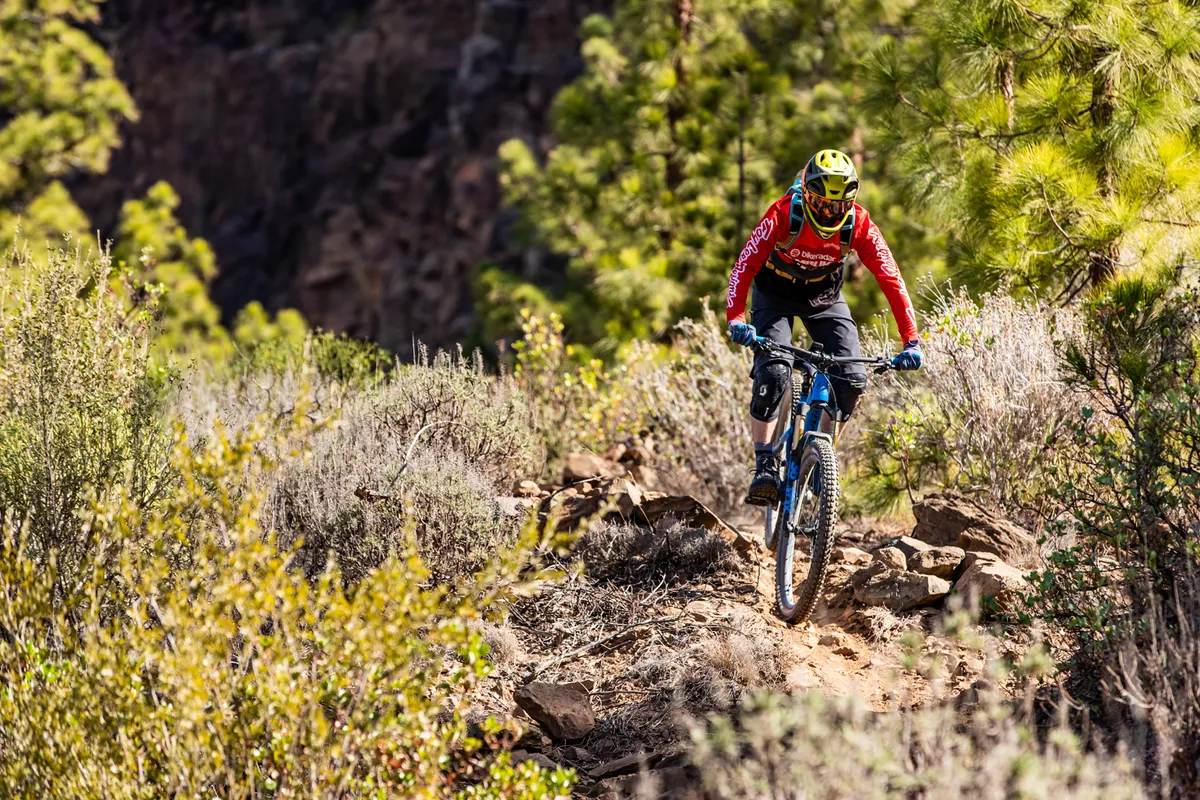
2020 Pivot Switchblade Team XTR climbing performance
Winching uphill, the first thing I noticed was that it doesn’t climb like a short travel trail bike. In fact, the uphill performance is more akin to a longer travel enduro bike, although it doesn’t feel especially sluggish it just isn’t lightning quick.
The XTR-specced bike I was riding will be one of the lightest models in the range, so it would be fair to speculate that the speed at which I was able to propel it up climbs was as good as it could be. The lower-specced models should be heavier so might be harder to climb.
Despite the relatively steep 75.5-degree seat tube angle, I still positioned the seat nose down and slammed it forward in the rails – hinting that the angle could be increased further.
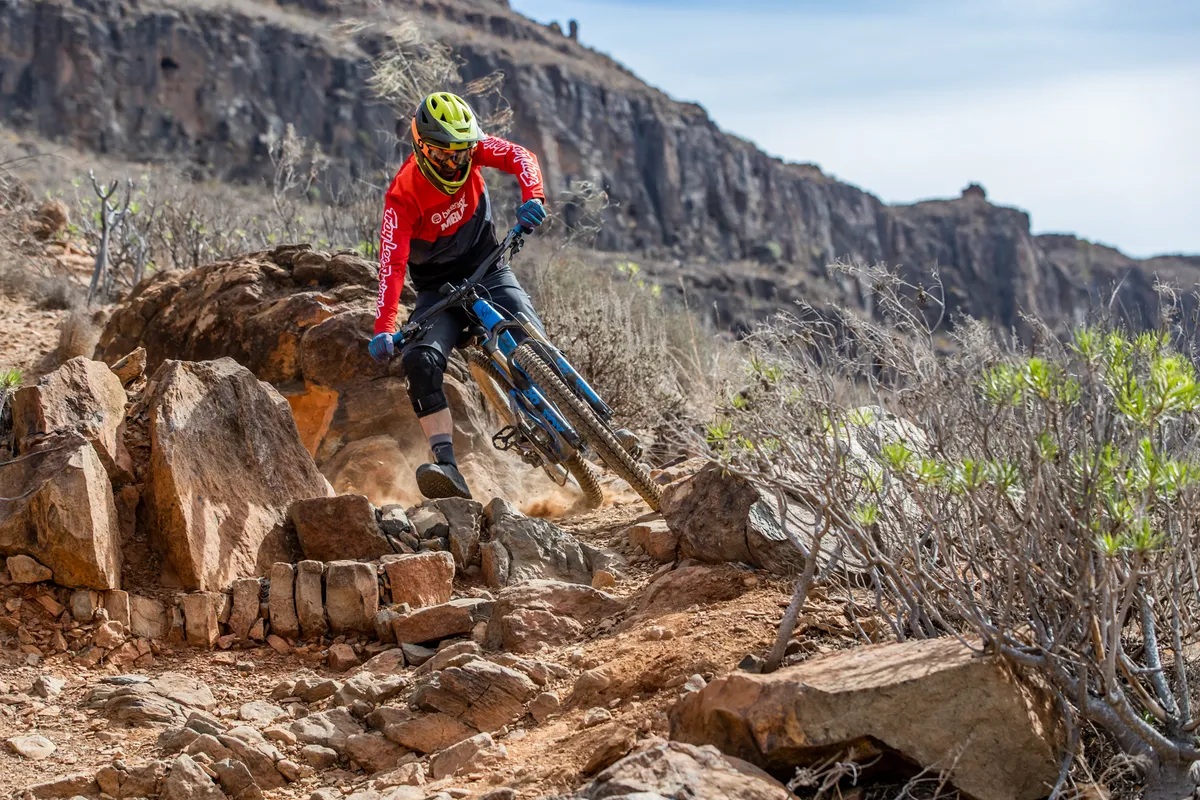
On flatter, high cadence pedalling sections I noticed there was some pedal bob at the start of the bike’s travel. The lockout function on the DPX2 shock did stop the bobbing but made the bike less comfortable and also reduced the available rear wheel grip.
I noticed low cadence, out of the saddle pedal strokes made the rear-end bob as well, but this wasn’t any worse than other bikes I’ve ridden of the same ilk.
The 12-speed XTR drivetrain shifted crisply and there were plenty of gears on offer thanks to the 51/32 tooth lowest ratio.
2020 Pivot Switchblade Team XTR descending performance
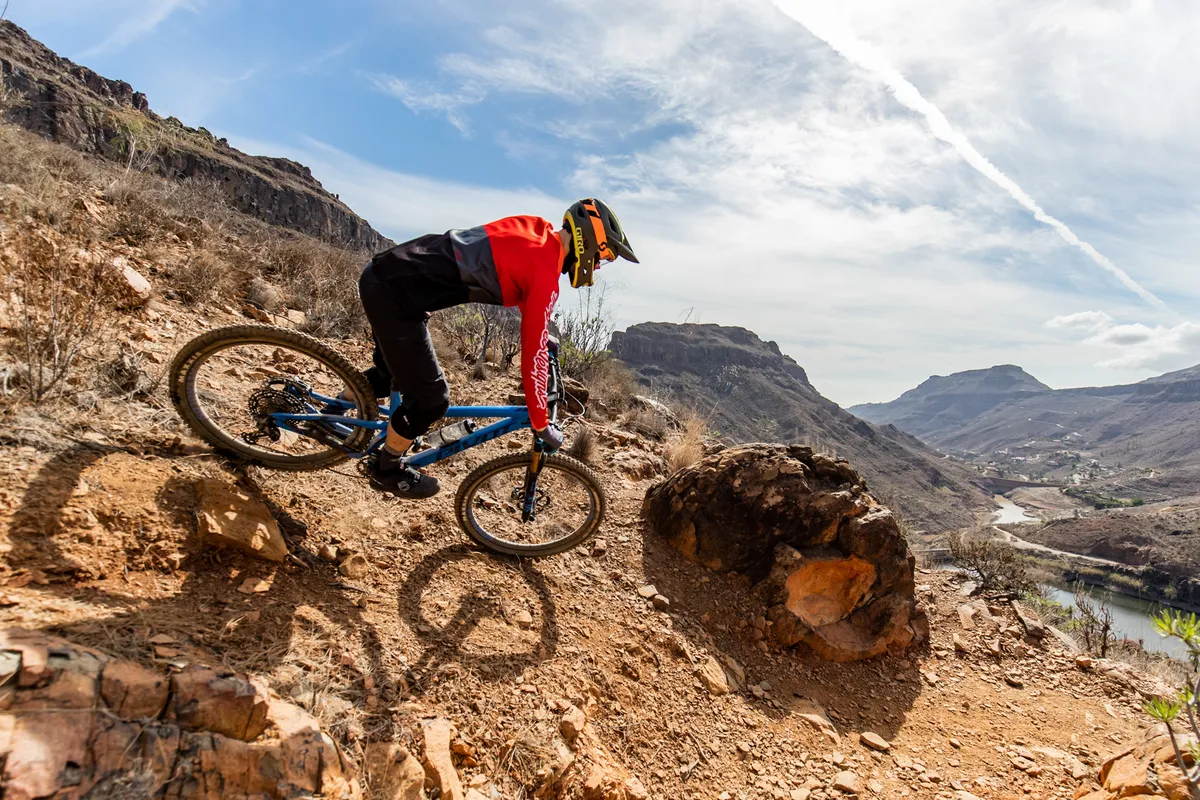
The Switchblade certainly delivered an overriding feeling of confidence on the downs, giving the impression it has more travel than the numbers suggest. The suspension was impressively supple at the start of its stroke and then had an enormous amount of ramp-up in the middle and towards bottom-out.
This meant it was possible to ride aggressively through bumpy, rock-strewn chunder where it worked overtime to smooth out the terrain. The rear-end didn’t feel like it was choking over successive bumps and only the craziest, roughest sections caused it to get out of shape.
When it did get out of shape, the rear wheel lost grip but I wasn't pitched backwards or forwards. Although, without trying a longer travel bike on the same trails, it’s hard to know whether this was caused by the lack of suspension travel or if the rear shock was spiking.
The mid-stroke and bottom-out resistance helped when I wanted to push hard through corners, up take-offs or into holes. But the ramp on the stock volume spacer setup in the Fox DPX2 shock could be quite abrupt as it reached the end of its travel – it felt like the spring curve rose sharply.
This meant it was quite hard to access the last bit of the bike’s travel, and the O-ring on my test bike confirmed that, despite my best efforts, I didn’t bottom-out the rear end.
Although the hard setup required for the particularly rocky terrain could have played a factor here.
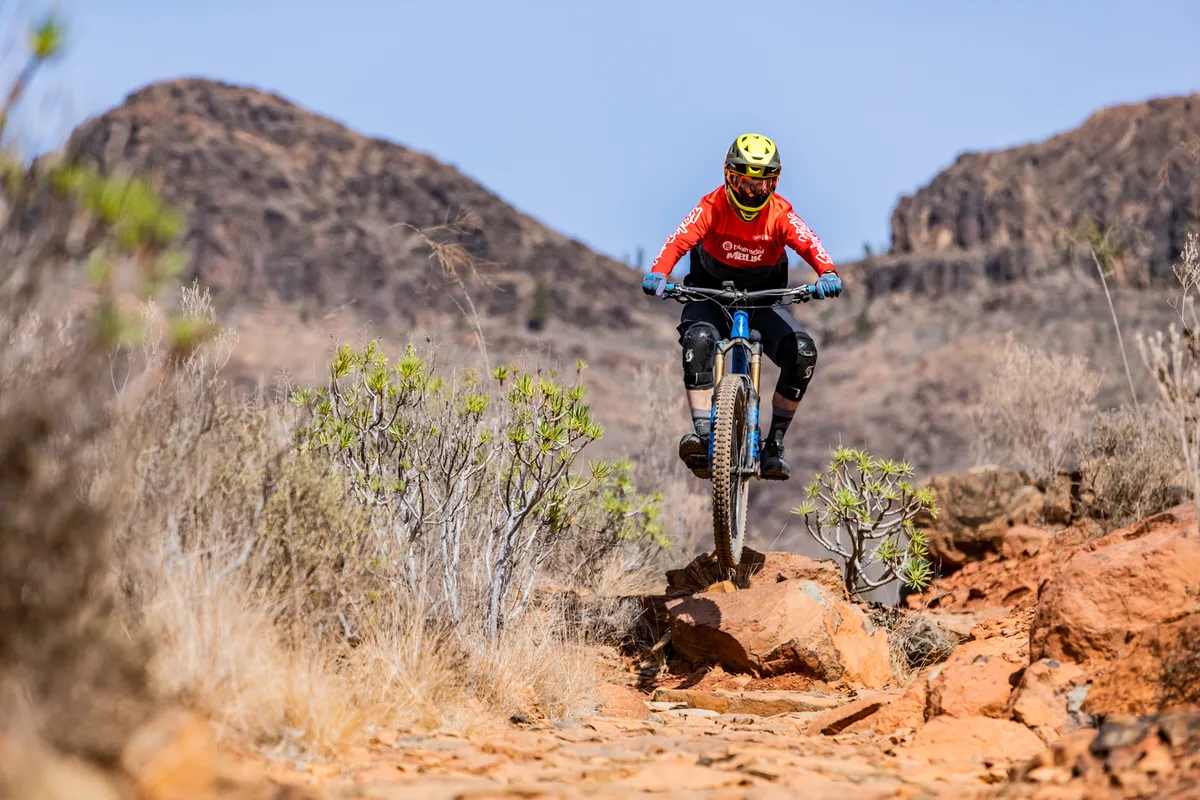
The DPX2 shock did feel great, but I think the bike’s suspension would feel even better with a Fox X2 fitted.
I appreciate fitting a DPX2 helps to differentiate this bike from the Firebird enduro rig with an X2, but if adding one, even as an option, is going to improve performance with little to no disadvantages – and let’s be honest, the rest of the bike’s spec is pretty enduro-focused and the X2 is only fractionally heavier than a DPX2 — then why not have the option?
The geometry felt good and on the trails I rode I never wanted a slacker head angle, longer wheelbase or extended reach with the stock 45mm stem. The trails weren’t especially steep, but the bike inspired confidence to shred even over some of the most rock-infested sections.
The GRIP2 160mm travel Fox 36 performed brilliantly and I found that the external adjustability meant it was possible to tune it to my requirements with little fuss. I did end up reducing the high-speed compression damping to zero to help absorb the recurring rocks, however.
I was also running a significant amount of air in the forks (95psi for my 71kg weight), which meant the front end stayed propped up, also helping to keep the head angle fairly slack.
I didn’t strike my pedals or cranks, which is unusual for my heels down, flat pedal style of riding. In the low setting, the claimed bottom bracket height is 346mm, a figure normally given to bikes with much more travel.
The bottom bracket was quite high, but it didn’t feel too lofty to carve turns with commitment once I finally found some flowier trails. On tighter, front-brake heavy switchbacks it was possible to feel an amount of awkwardness when trying to get the bike to turn, but this could also have been down to the marble-like rocks.
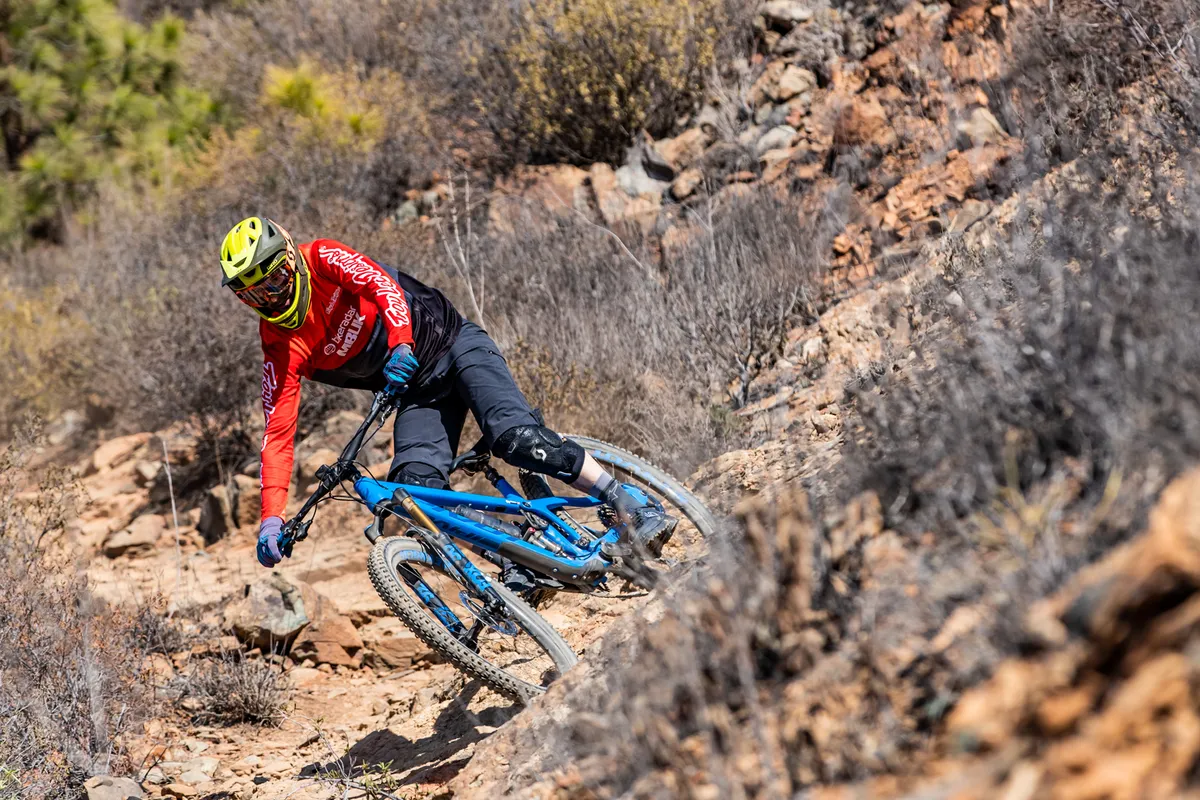
Thanks to this bottom bracket height, the bike was easy to sprint along flatter sections of trail without needing to worry too much about pedal strikes and the consequences of doing so when in full attack mode.
Overall it felt like Pivot has nailed the bike’s feel, especially through rough terrain. Even after riding prolonged rough tracks with hard tyres and suspension, little of the trail buzz was transferred into my hands and through my feet.
This compliance and smoothness had to be one of my favourite characteristics of the new Switchblade. On the flip side, it never felt too soft and it was possible to hold a line with confidence when required without the bike protesting.
The Shimano XTR brakes were a complete disappointment, though. Despite feeling sharp and consistent in the carpark and at the trailhead when attacking, the bite point altered every time I went to use them. This is a problem I’ve encountered with other sets too.

To top it off, the Shimano Ice Tech pads rattled in the calipers when the brakes weren’t on.
The internal cable routing kept things neat and tidy, and being able to clamp the cable at both the entry and exit points of the frame is good, but if you’re not careful to pull the cable tight between the two clamp points it does rattle against the inside of the tube it’s routed through – as my bike did for the duration of the test period.
2020 Pivot Switchblade Team XTR early verdict
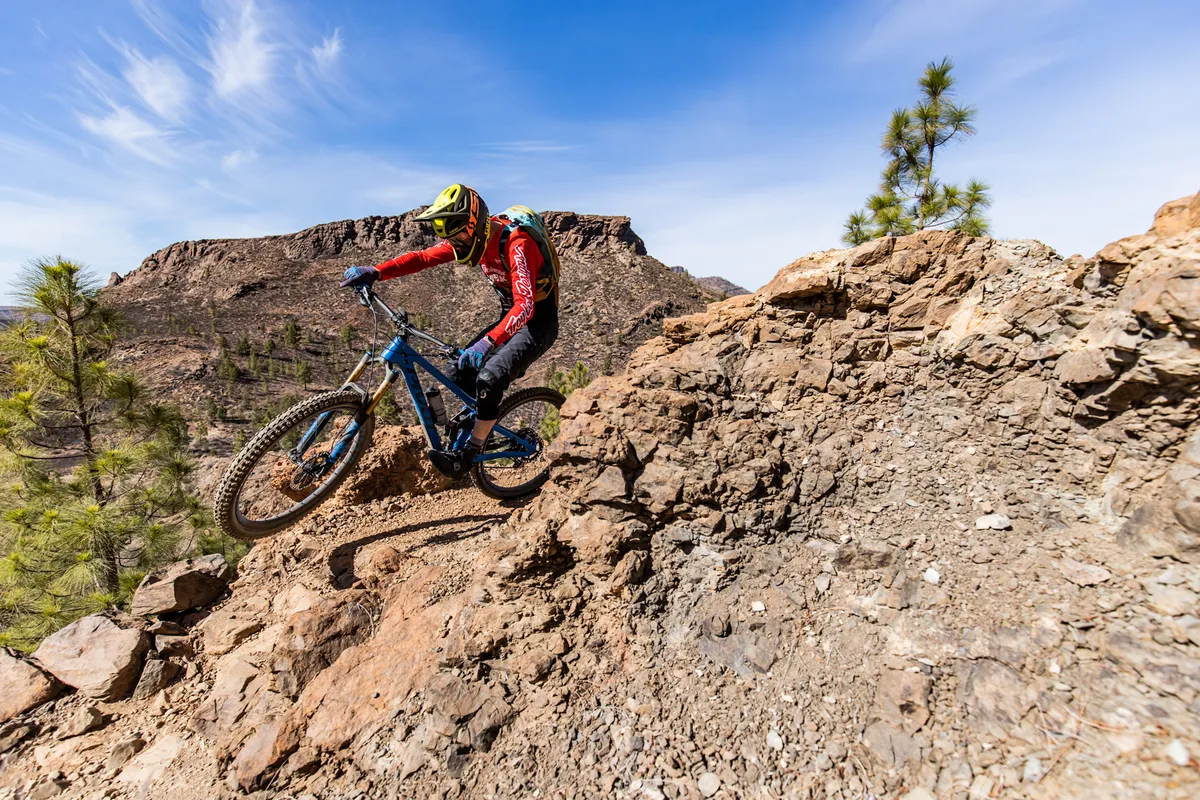
First impressions indicate the all-new Switchblade is a punchy little bike with plenty of go that bridges the gap between hardcore trail riding and enduro.
This model is obscenely expensive but Pivot’s carbon manufacturing processes are impressive and the spec is top-dollar stuff.
The geometry and travel don’t seem to hold it back and I think it’ll appeal to a lot of people looking for a one bike quiver.
Product
| Brand | Pivot |
| Price | A$14499.00, €10149.00, £9000.00, $8999.00 |
| br_whatWeTested | Pivot Switchblade Team XTR in size large |
Features
| Fork | Fox Factory 36 29in 44mm offset GRIP2 160mm travel |
| Stem | Phoenix Team enduro/trail |
| Chain | Shimano CN-M9100 |
| Frame | Pivot Switchblade 142mm travel carbon fibre |
| Tyres | Maxxis Minion DHF 2.5” WT, TR, 3C, EXO, MaxxTerra (f), Maxxis Minion DHRII 2.4” WT, TR, 3C, EXO MaxxTerra (r) |
| Brakes | Shimano XTR M9120 4-piston 203mm rotor (f), 180mm rotor (r) |
| Cranks | Race Face Next R with 32-tooth chainring |
| Saddle | Phoenix WTB Team Vigo |
| Wheels | ): Reynolds Blacklabel Enduro Wide Trail rim on Industry Nine hub |
| Shifter | Shimano XTR M9100 ISPEC 12-speed |
| Cassette | Shimano XTR M9100 10 – 51t 12-speed |
| Seatpost | : Fox Factory Kashima Transfer 175mm travel |
| Grips/tape | Phoenix Factory lock-on |
| Handlebar | Phoenix Race low rise carbon |
| Rear shock | Fox Factory Float DPX2 |
| Available sizes | XS, S, M, L, XL |
| Rear derailleur | : Shimano XTR M9100 12-speed |
